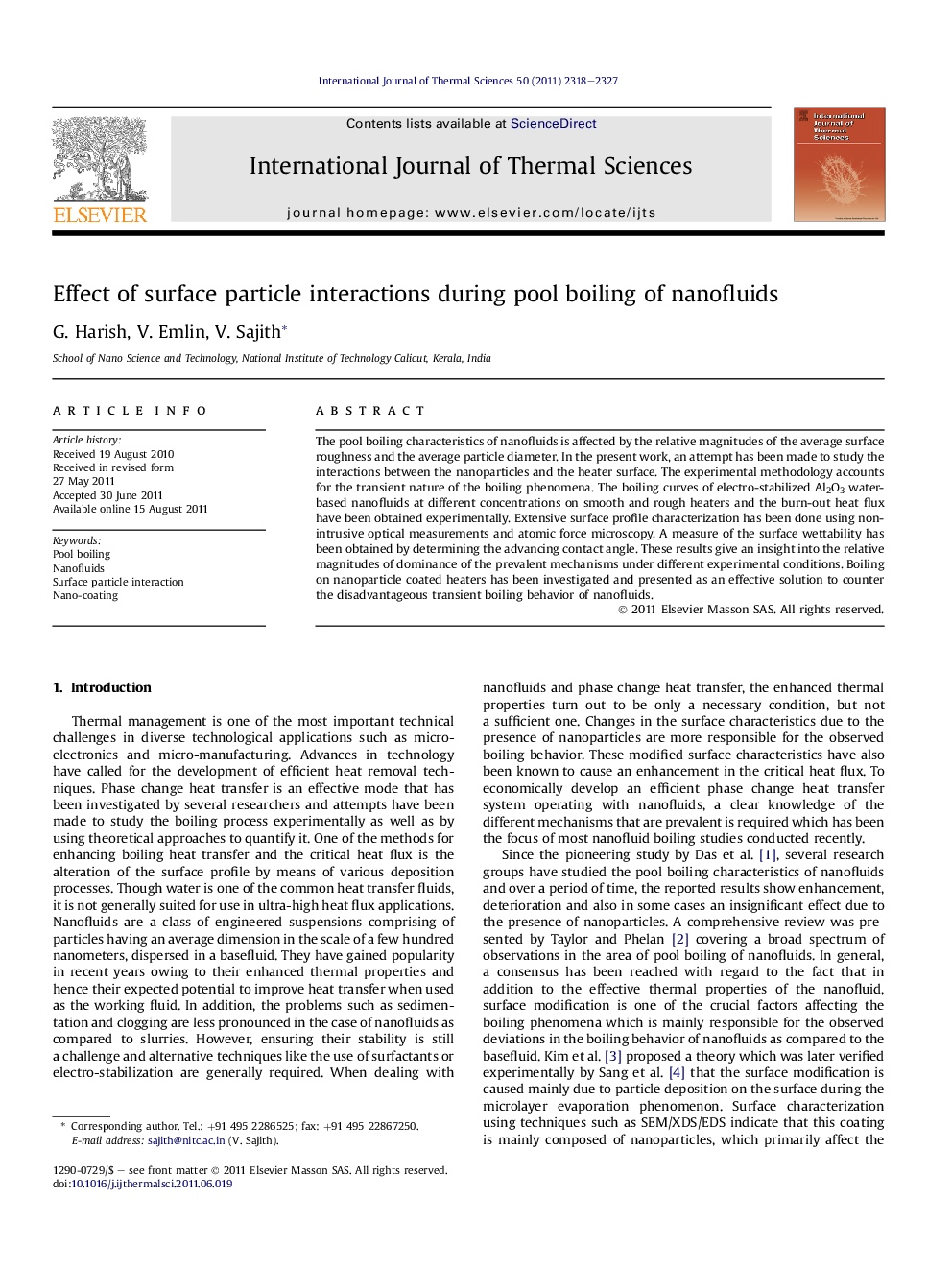| Article ID | Journal | Published Year | Pages | File Type |
|---|---|---|---|---|
| 669028 | International Journal of Thermal Sciences | 2011 | 10 Pages |
The pool boiling characteristics of nanofluids is affected by the relative magnitudes of the average surface roughness and the average particle diameter. In the present work, an attempt has been made to study the interactions between the nanoparticles and the heater surface. The experimental methodology accounts for the transient nature of the boiling phenomena. The boiling curves of electro-stabilized Al2O3 water-based nanofluids at different concentrations on smooth and rough heaters and the burn-out heat flux have been obtained experimentally. Extensive surface profile characterization has been done using non-intrusive optical measurements and atomic force microscopy. A measure of the surface wettability has been obtained by determining the advancing contact angle. These results give an insight into the relative magnitudes of dominance of the prevalent mechanisms under different experimental conditions. Boiling on nanoparticle coated heaters has been investigated and presented as an effective solution to counter the disadvantageous transient boiling behavior of nanofluids.
► Hypothesis: boiling influenced by ratio of nanoparticle size to surface roughness. ► Two extreme values of ratio were studied. ► Non-intrusive surface profile characterization performed after each boiling run. ► Surface particle interaction theory was verified. ► Transient nature of nanofluid boiling overcome by nanoparticle coated surfaces.
